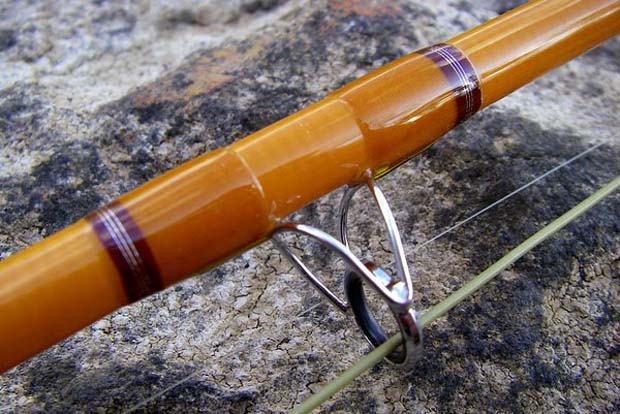[dropcap]O[/dropcap]n the occasion of my first fish caught on a fly rod, it was a chilly spring day, wet as in ‘mizzling’ in the grayness of so many early, Upper Peninsular of Michigan, March days. It was back in the 1960s. Three steelhead hooked and two landed. Fortunately, they were smallish, 7-pounds or so, but as powerful as a speeding freight train; first fish ever on a fly rod and I was smitten. The rod was brand new, locally crafted out of bamboo of a long ago forgotten weight designation. I had borrowed it. When I asked about buying one after my debut, I almost swallowed my tongue, $650! Thank God I didn’t break the one I’d borrowed. I’d still be in debtors prison.
After returning to Pittsburgh my first purchase of fly rods was immediate. After all, I’d been baptized into the belief of fly fishing for life. The rods were buttery. I had them made for me by a Pittsburgh steelworker-millwright, craftsman. They were a 5- and an 8-weight made out of S-Glass. For more than a dozen years they caught steelhead from eastern Ohio and western Pennsylvania and trouts in those states as well as trouts around the Lake Placid coordinates of New York’s Adirondacks.
Looking back:
Fly rod building technology changed in the 1970s, graphite the cause. New words were invented to confuse us, then fly rods were guaranteed for life, then prices skyrocketed, then imports and now back to the future with fiberglass.
Talking to David Redington of Southfork Rods
FLM: Dave, what’s the difference between S-glass and E-glass?
Dave Redington: “There are two kinds of fiberglass rods. One, made out of S-glass and the other out of E-glass. The former is a thinner walled glass with higher modulus’ – similar to the earliest graphite rods. It was developed just about the time that graphite stole the market. Several western glass rod builders now favor the S-Glass. S-Glass isn’t as durable as E-Glass and is also more expensive. The E-Glass is good all the way up to around a 5-weight. E-glass was developed for the military during WWII, and used as antennae on battleships and elsewhere. The “E” stands for electrical. All of our rods (SouthFork Rods) are made from E-glass. One, for the cost savings; two, for the similarity of feel and presentation capabilities it has to bamboo. Our rods are one, two and three piece rods.”
Why E-Glass fly rods?
Well, for one you can lay down a fly as softly as a bee landing on a flower. Two, the quiver can be felt in a cast all the way down to the cork; you’re in total control when you have that kind of feel. The whole rod feels like it’s part of your arm. Thirdly, the delicacy of an E-Glass rod is relational to a cinder block and maintenance required is similar to the care demands of a cement stoop. One more thing, fiberglass rods don’t cost $800 bucks. For example, Dave Redington’s Southfork Rod Company in Stuart, Florida makes superior fiberglass rods: 2-, 3-, 4- and 5-weights that are 6-, 6.5-, to 7-feet long and come in one, two and three sections. The cost, $175 to $325. They all cast beautifully. Dave is not just a craftsman, he’s a fine fly fisherman so that element is infused into his rods.
A short history
Fiberglass fly rods and conventional casting rods skyrocketed in sales after WWII, but bamboo hung in there with the country club set in the U. S. and Canada for decades. When graphite came on-line in the 1970s, fiberglass rods went into a steep decline as did bamboo. At one point in time during the decline you could pick up a good glass fly rod for $.10 on the dollar. Bamboo held their value.
Today, fiberglass fly rods occupy a small, but growing niche of the fly rod market. A few larger fly rod manufacturers have stepped-up to the plate and have some fiberglass models. For instance, a Tom Dorsey designed Thomas & Thomas Heirloom model, a 7-foot, 5-inch 5-weight that weighs in at a whopping $675 (S-Glass).
The center of the industry is still several small companies that make outstanding casting rods and capably customize if asked. And make no mistake about it, the technology utilized qualifies saying that they are now making the best glass fly rods of all time.
[information]
Southfork Rod Company website: […]
Phone: 772-486-8827 or 772-485-9543
Other fiberglass rod makers:
Redington Rods website […]
Steffen Brothers Rods website […]
TL Johnson Rods website […]
McFarland Rods website […]
[/information]







